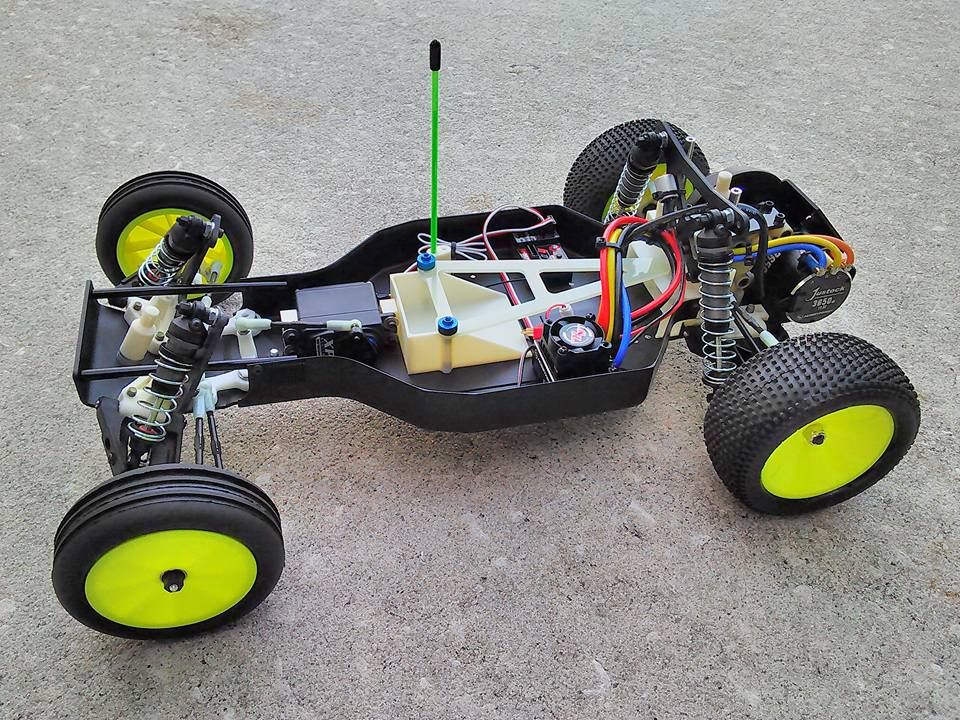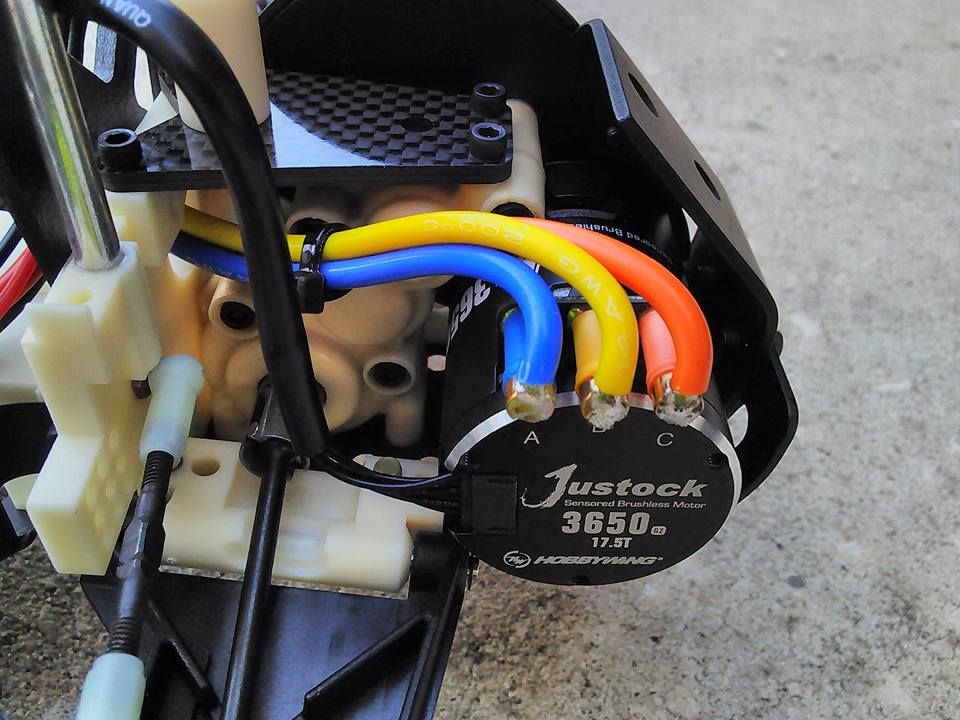I also noticed that the kV rating on the 17.5T G2 motor is 2200kV, compared to 2100kV on the previous 17.5T G1. Another notable feature is the dust-proof o-ring between the end-bell and the motor can that is used to protect the hall sensors from dust and debris. This leads me to believe that if you measure your motor's temperature, do so on the can and not the end-bell if you want an accurate reading.
After soldering my motor connections and a Dean's plug onto the esc's battery wires, I manually programmed the esc by using the instruction manual. I wish I had bought the programmer, because otherwise you will need a lot of patience to go through all the beep sequences to get to your desired parameter choices. Once you get the hang of it, it's not really that bad.
This BL system went into my RC10 World's re-re. I had no fitment issues with the Justock XR10 Zero Spec esc, as it's footprint is small and compact. Soldering was made simple by the help of pre-tinned esc wires. Hobbywing uses a solder with a very high melting temperature, but if you keep your iron tip clean with a dab of solder on it, it seems to help things go smoother. I used a Hobbico 60W iron for the job.
I hooked up a new SMC 5000mAH 40C 2s lipo to the new system, and powered it up. I did my testing on the road in front of my house. I always do this with new rc cars, to get the gears and bearings ran in, and to also break in the slipper clutch.
The motor has a lot of torque!
With 31/72 gearing, the 17.5T BL system pushed the buggy fairly fast on the top end. Without a GPS on it, my brain says it's going 30+ mph. Off the line, the motor has enough torque to make the slipper clutch sing. Well, for one to two feet anyway, lol!
Sensored start up is oooober---smooooth............Effortlessly smoooooooth.



